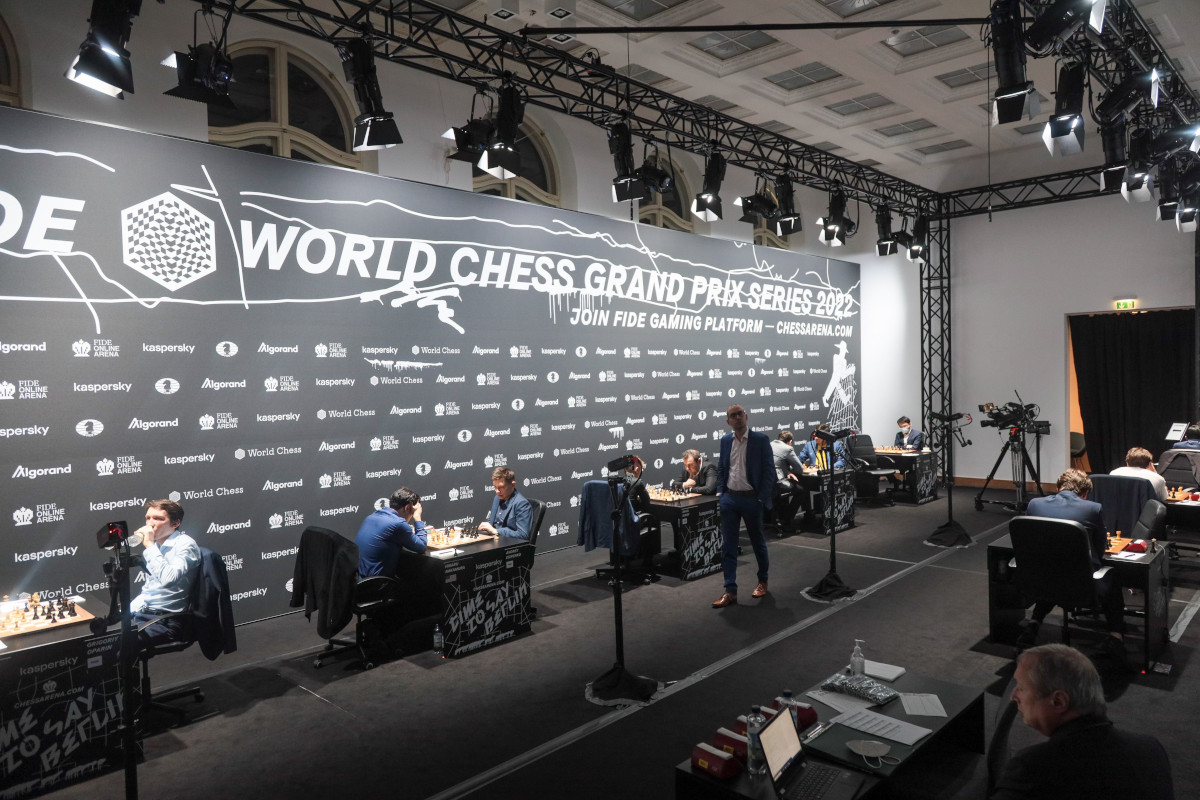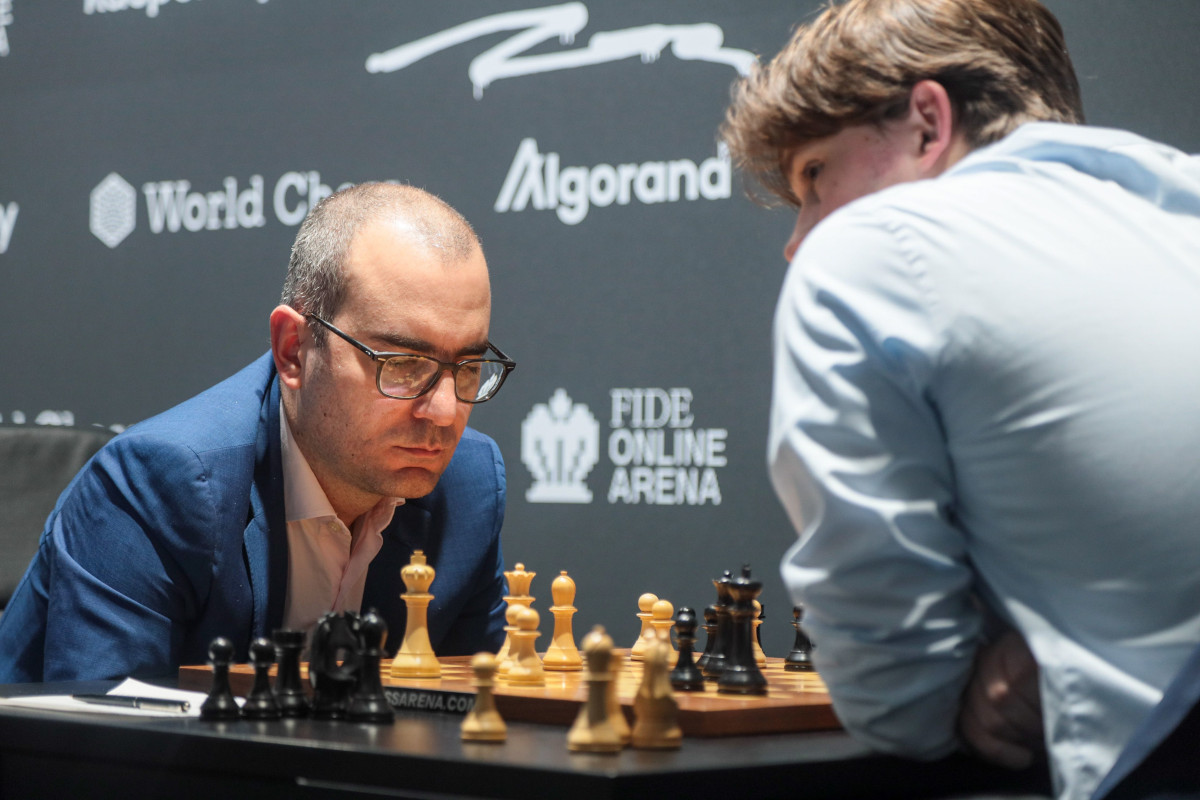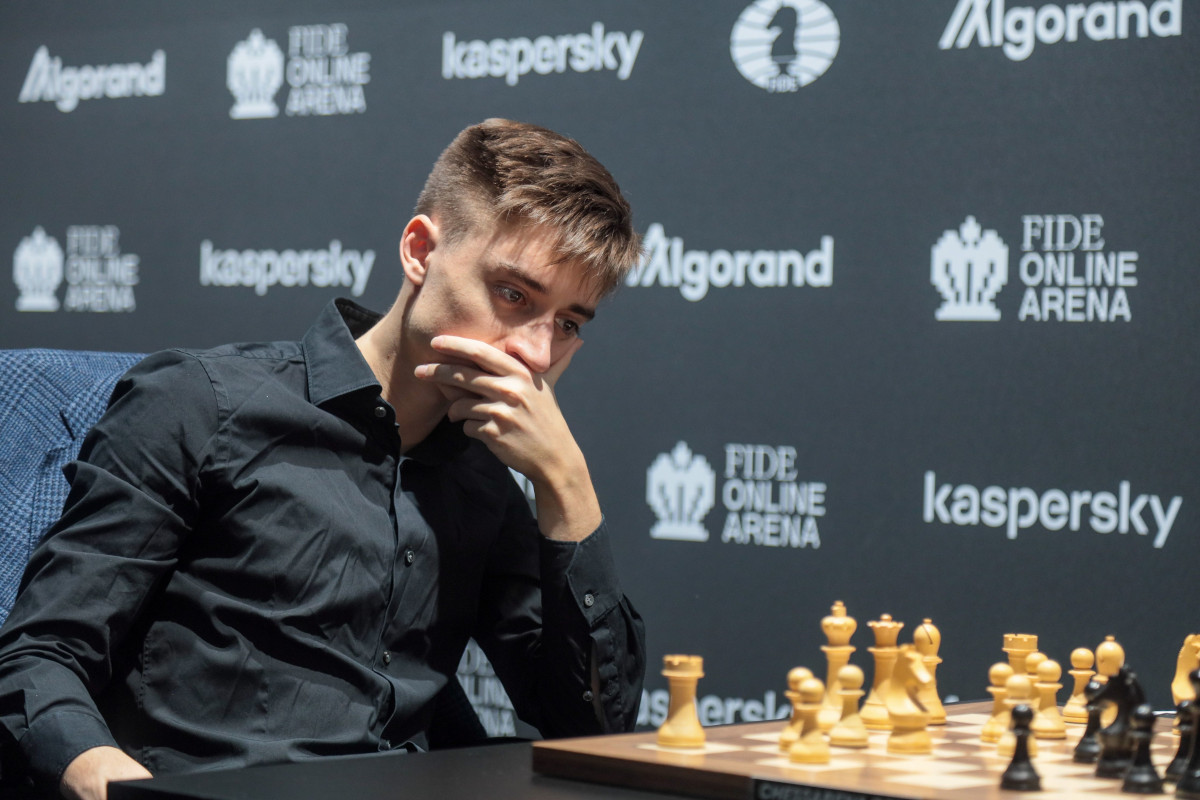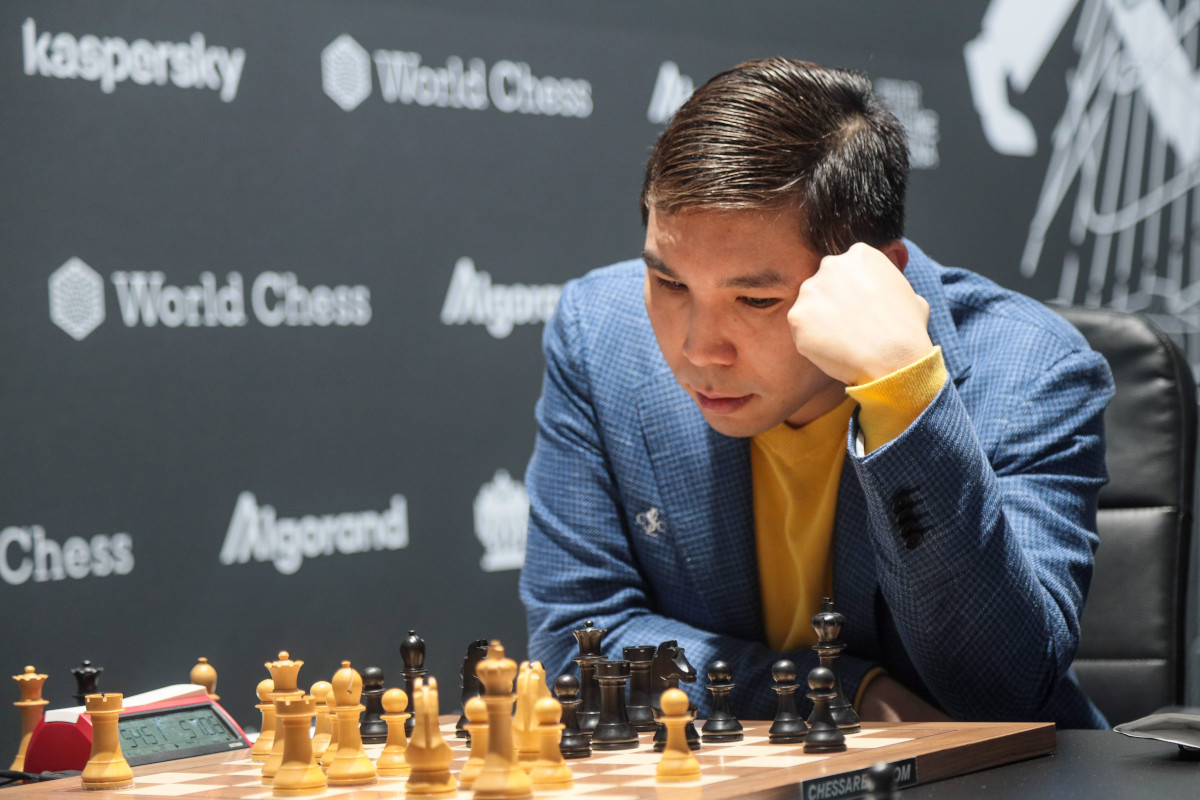


For the first time in this year’s Grand Prix series, all games in a single round of the preliminary stage finished drawn. Half of Wednesday’s encounters lasted around 30 moves, while the other half did see some fighting in somewhat imbalanced positions. The two players who got considerable advantages but did not manage to convert them into wins were Andrey Esipenko and Leinier Dominguez.
While Esipenko saw his chances rather swiftly neutralized by Hikaru Nakamura’s defensive efforts, Dominguez’s game lasted no fewer than 80 moves, with Vincent Keymer showing tenacity to hold the balance both in the middlegame and in the ensuing technical endgame.
White has an extra pawn, the more active king and the chance to create a passer on the kingside. However, the presence of opposite-coloured bishops in the endgame justifies Black’s decision to offer a queen swap with 44...Qf6.
As Keymer explained afterwards, once the time control had passed, he thought that “normally” he should lose this position if he trades queens, but with the bishops of opposite colours on the board it was “certainly a very difficult and complicated position”.
Both players agreed that perhaps White could have found a way to create a zugzwang position to win the game, although Dominguez would have needed to play extremely precisely to get the desired setup for this to happen. In the end, a draw was agreed in the following position.
It was a great showing by the German prodigy, who has worked extensively with none other than Peter Leko, an excellent technical player himself.

Leinier Dominguez trying to find a way to break through against Vincent Keymer
Once the round was over, Dina Belenkaya interviewed a few of the players, and asked them to share their opinion regarding FIDE’s decision to ban Sergey Karjakin for six months after the former World Championship challenger publicly expressed his support for Russia’s invasion of Ukraine.
Anish Giri noted that it is difficult for him to understand how FIDE is supposed to deal with the problem, since “it is a pretty unprecedented situation” and he “fortunately does not recollect [similar] cases”.
A bit more willing to share his thoughts on the topic was Maxime Vachier-Lagrave, who first referred to Karjakin’s tweets:
First of all, I think Sergey went over the top in quite a few of his statements. He’s definitely entitled to an opinion, but some of his tweets were in very poor taste.
The Frenchman added that it is not for him to judge whether Karjakin should be banned, as that is the job of the Ethics Committee, although if it depended on him, he would have only issued a warning.

Daniil Dubov
Known for his straightforward opinions, Daniil Dubov first mentioned that he fully agrees with private organizers who have announced that they do not plan to ever invite Karjakin to participate in their tournaments again — i.e. Norway Chess, the London Chess Classic and the Grand Chess Tour. Dubov later explained that he finds FIDE’s decision to be very strange insofar the length of the ban is difficult to justify:
It’s either way more or nothing, that’s my opinion. It’s either, he’s not guilty at all and it’s fine, or it’s at least three years without the game and so on. [...] If we are talking about a topic this big, it cannot be just half a year without chess, which basically means he will just not play the Candidates and then he’s back.
As Douglas Griffin shared on Twitter, apparently Karjakin wants to set up an alternative chess organization to FIDE and has already given up on the idea of participating in the Candidates.
Meanwhile, Wesley So has a more definite stance on the matter. The Filipino-born grandmaster agrees with the ban based on the fact that Karjakin has gained public notoriety only due to his successes as a competitive chess player. So added:
I saw what he’s been writing on Twitter — I have nothing to say against Sergey, but I think he’s lost his mind in the last couple of months. [...] This is not just about a political opinion, but it is about the killing of innocent civilians, innocent Ukrainians.

Wesley So in blue and yellow